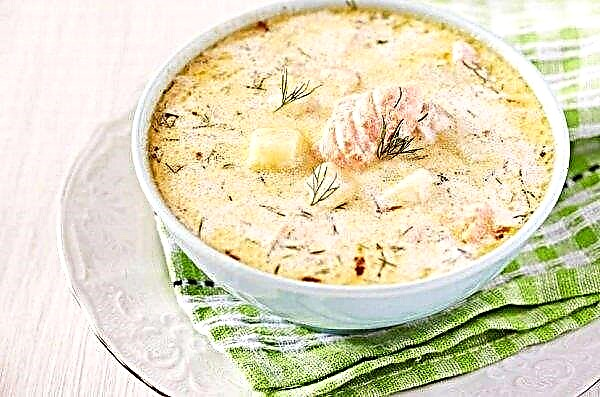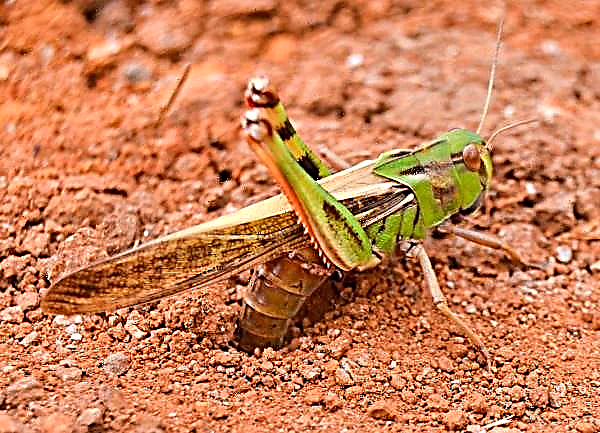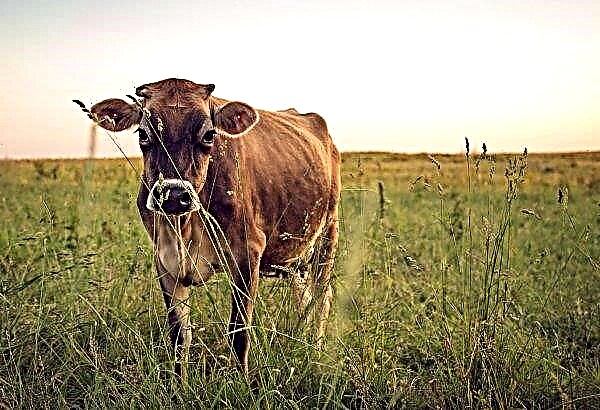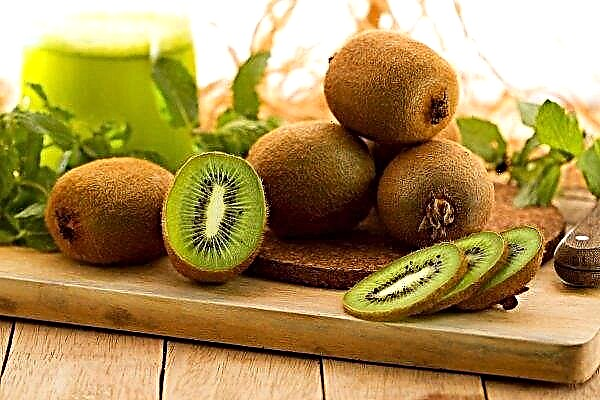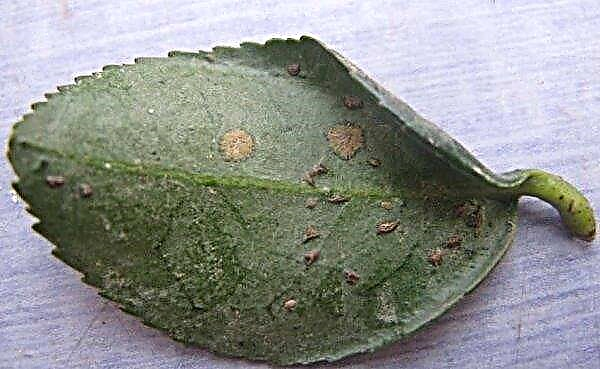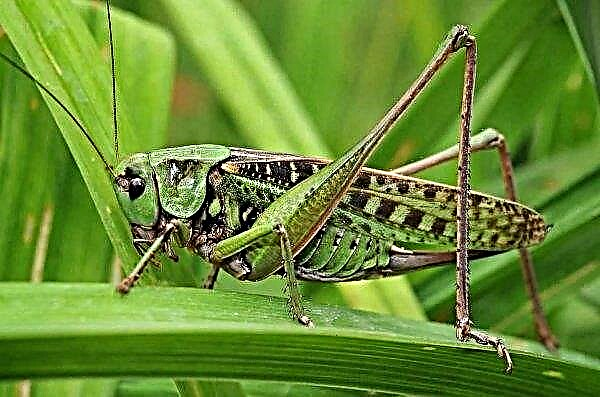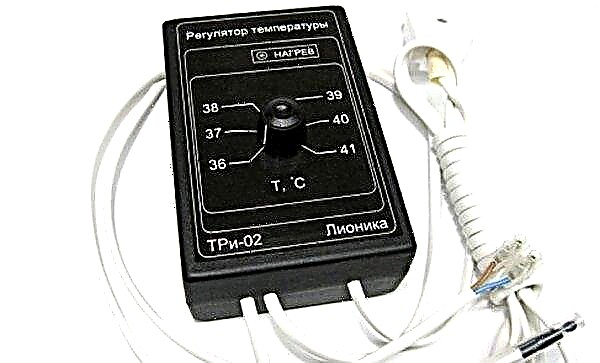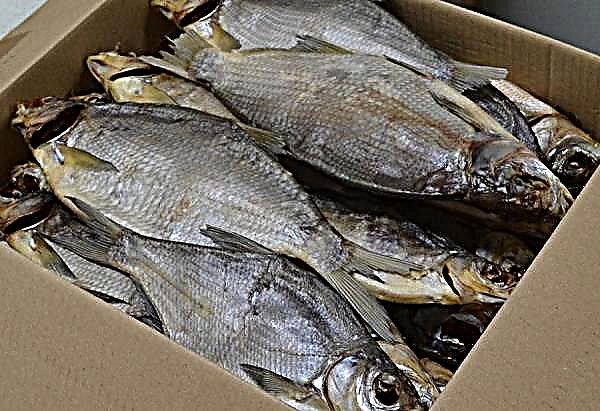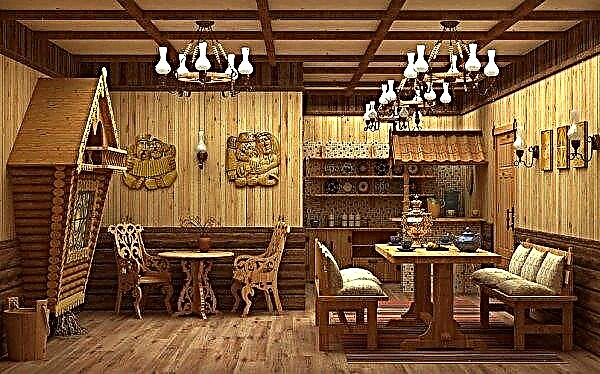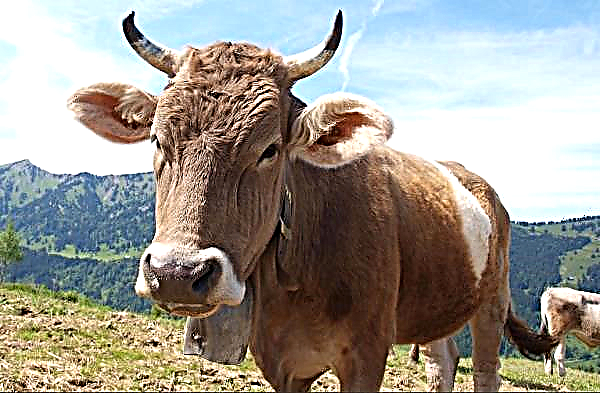Bonsai is the eastern art of landscape design, the classic version of which is the cultivation of miniature pine trees. Flower shops offer pre-formed potted trees, but it’s much more interesting to grow bonsai with your own hands. This article contains helpful tips on how to do this at home.
What is pine bonsai
The Japanese word "bonsai" (in Chinese "pencai") is translated as "grown on a tray." The essence of this garden art is to grow an exact copy of a tree growing in the wild, but in miniature, to decorate a garden or room. This goal is achieved by application of special technology of pruning roots and branches, which slows down tree growth.
Did you know? Bonsai is an important part of Japanese culture. More than 100 thousand miniature green compositions are considered a national heritage and for centuries have been passed down by the Japanese from generation to generation.
The size of an adult plant reaches 50-150 cm, which is completely proportional to the size of an almost flat root system bounded by a shallow pot. Not only the crown is formed, but also the trunk, which can be tilted or bizarrely curved..

Bonsai tree is characterized by such features:
- the trunk is powerful, thickened at the base, with roots protruding from the ground;
- a small number of branches, each of them is clearly visible;
- the image corresponds to one of the forms that are considered classic.
The most popular plant used to create mini-trees is pine. Its advantages are rapid growth, compliance during formation, beautiful shape and adaptation to different conditions.
Of the 120 pine species for bonsai, only four varieties are most often used: Japanese black, Japanese white, mountain and ordinary:
- Japanese black pine - The most favorite Japanese bonsai. She has a very beautiful bark: purple-gray, almost black in color, over the years becomes like a piece of rock. Advantages: it is steady against adverse conditions, does not demand nutritious soils, grows even on rocky soil. Disadvantages: slow growth and long needles (7-15 cm).

- Japanese white pine has a columnar shape. The name received for the unique color of the needles: dark green on the outside and whitish on the inside. Branches of a white pine tree grafted onto the trunk of a black variety look very impressive.

- Mountain pine It has a very dense crown, which can be given any shape. During flowering, it is covered with beautiful light purple flowers. This species has a special stamina. She easily tolerates extreme conditions, and this does not affect her appearance.

- Common pine is the most affordable in our area. External characteristics: yellow-green and blue-green paired needles, red-brown scaly bark. The main advantage is obedience to formation. She willingly takes any form at the request of the gardener.
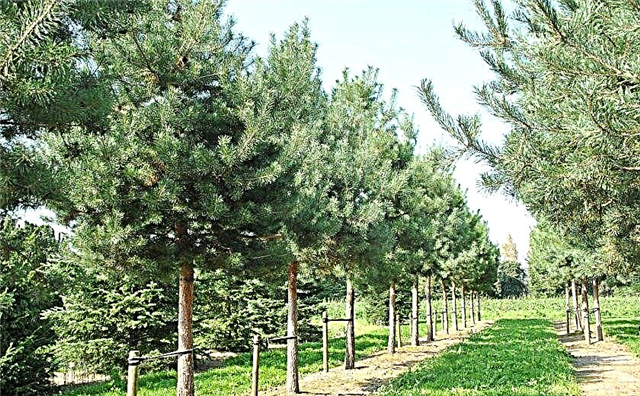
How to grow bonsai from seeds
To grow a bonsai pine from seeds, you need to be patient, as this can take many years. It all starts with the autumn seed harvest, or rather, pine cones in the nearest forest. Then they need to be put in a warm place until they dry out and reveal their seeds.
Important! Whatever soil composition is used for sowing seeds (sand, peat or earth), it and drainage must be decontaminated by calcination or steaming. This will serve as a preventive measure against seed infection..
Growing seeds is divided into the following stages:
- Seed preparation. It is recommended that they be stratified, that is, quenched with cold at a temperature of 0 ... + 4 ° C (in the refrigerator in a plastic bag), for 2-3 months. Stratification contributes to the formation of the embryo in the seed and the softening of its shell. Some home gardeners replace this process with daily soaking in warm water or in the Epina solution.
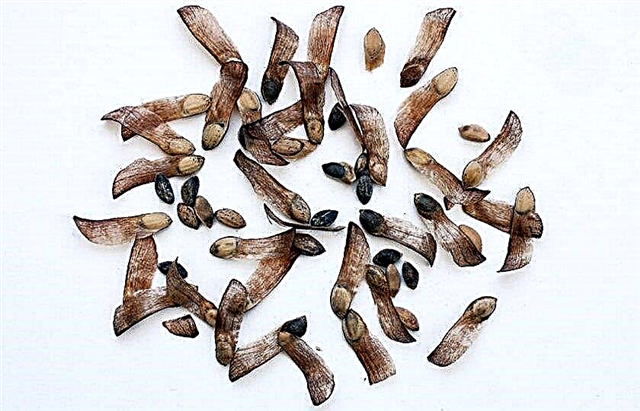
- Sowing. Put a layer of drainage of 2-3 cm at the bottom of a sanitized pot with a depth of 10-15 cm. Fill it (but not to the edges) with coarse sand, it is possible with peat. Make indentations of 1.5 cm at a distance of 3-4 cm from each other. Put the prepared seeds in them and sprinkle them with fine sand. Pour a little, cover with glass or a film with holes for ventilation and put on a bright windowsill. When shoots appear (after 14 days), the film must be removed, otherwise the sprouts will stretch very much. Put it in a sunny place again and monitor the humidity. There is no need to fertilize.
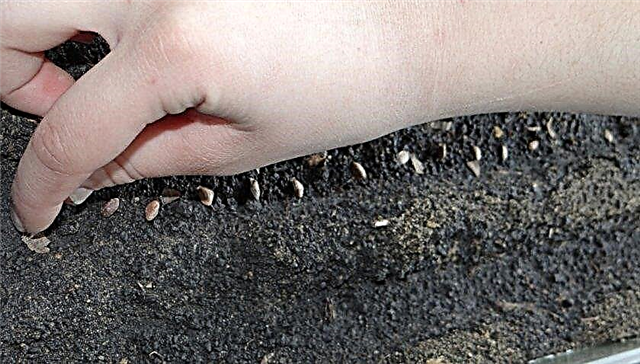
- Pick and first formation. 2 weeks after the emergence of seedlings, the seedlings will grow to 5–7 cm, and their stem will turn brown. Carefully remove the sprouts from the pot and completely cut the root (its stem at this time is 10 cm long) in the place where the stem ceases to be green. This pruning contributes to the development of a flat root system and a short trunk. After this, cut the seedlings soaked for 15 hours in the hormonal root-forming agent (“Kornevin”, “Heteroauxin”, etc.). Now each instance is planted in a separate container with a loose substrate. A mixture of peat or garden soil with sand in equal proportions is suitable. Put the pots away from the light and do not allow the earth to dry out.
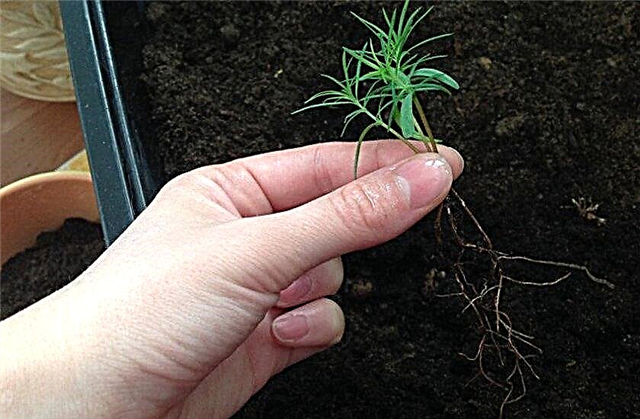
- Second transplant. After a month, two seedlings should take root. This will be seen on new needles. It is time to transplant them into permanent containers, the depth of which should be no more than 15 cm. The same soil composition is used. An important condition when planting in new pots: the roots should be carefully placed in a horizontal plane. Now the seedlings are again returned to a sunny place. In 3-4 month old plants, the first buds will already appear.
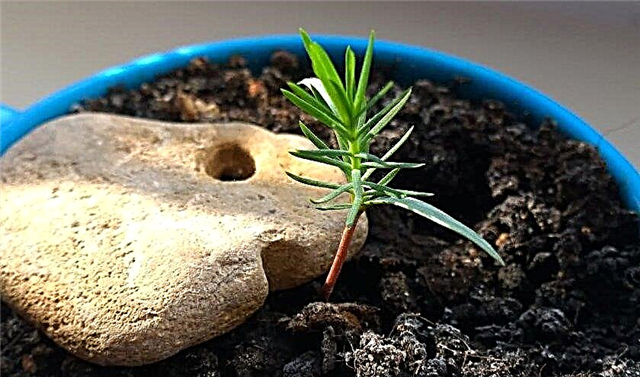
The rules for growing bonsai from ordinary pine
Growing bonsai pine from a finished seedling is more popular than from a seed. This method can be called accelerated, since the tree of the desired shape can be obtained after about 7 years.
Step-by-step instruction:
- Buy a small pine seedling, preferably with an uneven stem, in the store or carefully dig in the coniferous forest. You do not need to do any manipulations with it, just transplant it into a pot with a fresh substrate, which consists of a mixture of infertile earth or peat and sand (1: 1). The container size should not exceed 15 cm. It is imperative to pour drainage to the bottom, and mulch the ground on top with sawdust. Put the pot in a sunny place, sheltered from the winds.
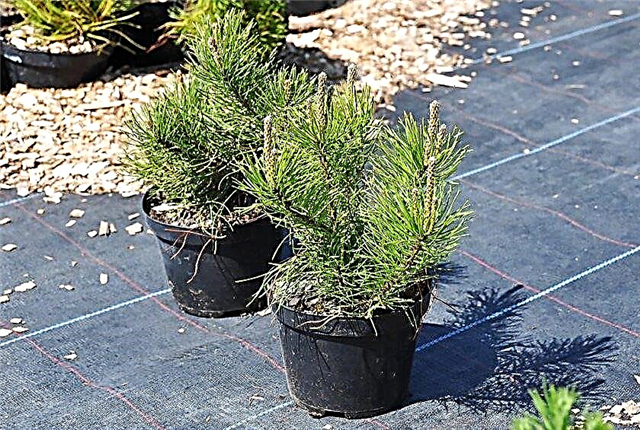
- The first pruning is done next spring, in late March or early April. Candles that extend upwards are cut by 10 cm. Thanks to this step, the growth of side shoots and the thickening of the lower part of the trunk are activated. The remaining young shoots pinch to slow growth. At this stage, it is already possible to begin the formation of the trunk. If you have decided on the style of bonsai, then in accordance with it you need to bend the trunk and branches with a wire frame that spirals around them in a spiral. After cutting, the plant is watered with fertilizer and returned to the street on a well-lit area. It is recommended to put the pot on a stand 30 cm high. In this state, the plant is left for a year. If necessary, thinning needles can be done in the second half of summer.
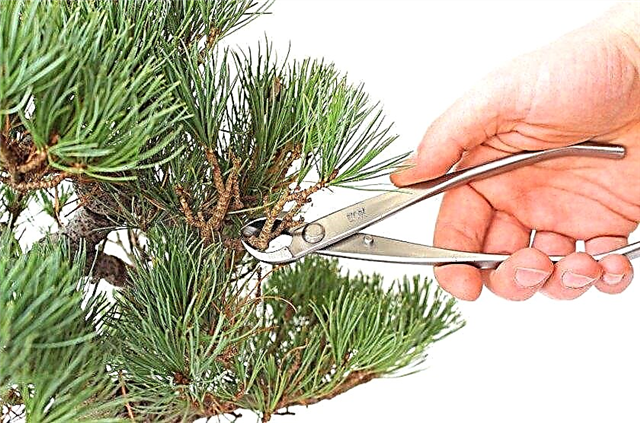
- A year later, in April, the first pruning of the roots and transplantation. If the tree is very dense, then you can first trim the shoots a bit, highlighting the main tiers of the branches. But excessive thinning of branches can do much harm. Then the rhizome is removed from the pot along with an earthen lump, freed from the ground, but not completely. Released core and too long lateral roots shorten. In a wide but shallow container, pour drainage from large stones to the bottom, and then - the soil mixture. The substrate can be prepared from acadama or Senegalese clay, lava and pumice in equal amounts, or from sand, perlite and humus (2: 2: 1). When planting, the seedling must be placed at the right angle or vertically, spreading the roots horizontally. Fill the soil, leaving the root neck on the surface. Then the plant should be abundantly watered and sprinkled with needles. Put the container on the street, but first in a shaded place, gradually accustoming to the sun. Care during this year consists in watering and top dressing. If pruning of branches was not done in the spring, then in late autumn it is worth trimming the apical shoot at the level of the nearest branches extending from the trunk.

- In the fourth year, when the bonsai is rooted in a new container, hard pruning is carried out to give the crown the desired shape. In this case, the lower tiers should already be clearly visible. Extra branches and bunches of needles are removed from the trunk, and pinch the remaining shoots. Put on the wire frame. In the summer, needles are thinned on the main branches. Throughout the year, the tree needs regular watering, sprinkling and feeding with nutrients.

In subsequent years, you need to adhere to the chosen tactics of forming your bonsai.
Bonsai Care Rules
Bonsai is a unique tree that needs special care. In this case, you must adhere to several important rules:
- the place should be sunny and free of drafts regardless of whether the tree grows in an apartment or in the fresh air, the lack of lighting leads to excessive elongation of needles and even the death of branches;
- temperature must be in accordance with natural conditions: in the summer, it is advisable to expose the indoor plant in the air (balcony), and in winter put in a cool room with a temperature of no higher than + 5 ... + 10 ° С;
- regular, moderate and seasonally watered: in summer - twice a week, in spring and autumn - once a week, in winter - even less often, since the pine tree is at rest;
- top dressing no more than once a month (except for the rest period) with complex mineral or organic fertilizer (humus or compost);
- transplant It is recommended to do it before the sap flow (in March) every 2-3 years, but the young seedling can be transplanted only for the 5-6th year.
Did you know? Bonsai art came to Japan from China in the VI century. n e. Buddhist monks brought miniature trees along with their religion.
Important care measures are shaping and trimming. To do everything right, you should consider the vegetative features of pine. The active growth period occurs only once a year, or rather, at the end of spring.
In addition, this plant has 3 zones that differ in growth rate:
- 1st zone - the upper part of the tree, on which shoots grow quickly, it needs to be cut more strongly;
- 2nd zone - branches in the central part of the trunk, grow at medium speed;
- 3rd zone - branches of the lower tier with a characteristic weak growth, they are cut less than other shoots.

The formation of a bonsai involves not only shaping the pruning of the crown, but also giving the desired shape to the trunk. This is achieved by putting on a tree a special frame of the desired shape from aluminum wire (3 mm). The frame is installed in the fall and removed in the spring, otherwise the wire will start to dig into the growing tree. Wire formation should begin at the seedling stage, when the branches are flexible and easily bent. In an adult tree, they are woody and can be broken.

Pruning of shoots is performed in autumn, when the sap flow is minimal.. And you will have to cut not only shoots, but also buds, candles and even needles. A special procedure is the obligatory plucking of needles. Old and young needles are removed not only to give an aesthetic appearance, but also to improve ventilation and lighting of all shoots, as well as to regulate the height and width of the plant. Recently, the complete removal of all needles has been practiced in order to shorten their length. They will grow back, but will be much shorter than the primary needles. All manipulations with needles are done in late summer, early fall.
Important! Pruning should be done with sharp, sanitized scissors. Slices are made at an angle of 45 ° and then carefully processed.
Is it possible to grow a bonsai from two pines
Most bonsai styles are formed from a single plant, each image symbolizes something. But There are several styles in which 2 or more trees are combined in one composition. For instance:
- soju, or "two trees nearby" - a composition of two separate trees of different age and size, which grow side by side in the same container and symbolize the constant transition of traditions from generation to generation;
- yose - forest style, consists of a group of trees of different ages (odd number) imitating a forest landscape, is a symbol of communication between different generations;
- saikay - landscape style (informal bonsai), in which a composition resembling a natural landscape is created not only from trees, but also from moss, as well as stones of different sizes.

Landscape Bonsai Pine
Since the pine tree is a forest tree, it is nevertheless more comfortable in the garden than in the house. And pine bonsai will fit perfectly into the garden landscape and become the main decoration of your summer house. 5 years after planting a seedling in a pot, it can be transplanted into the open ground. At this time, the tree is a full-fledged bonsai with a clearly formed crown and trunk and has a powerful horizontal root system.
Important! It is not recommended to immediately plant a seedling for bonsai in open ground. In a pot it is easier to form a tree and its roots in the right way.
You need to choose the most suitable plot near the house: sunny, closed from cold winds, without drafts. Dwarf pine is planted on a hill that can be built from prepared soil. At the bottom of a shallow pit, it is advisable to put a piece of concrete slab or other material that will prevent the root from deepening. In the wild, the tree quickly builds up a powerful rhizome and trunk.

It will take several long years to create a beautiful pine bonsai. But the tree continues to grow and change. Therefore, bonsai can become a thing of your life.













